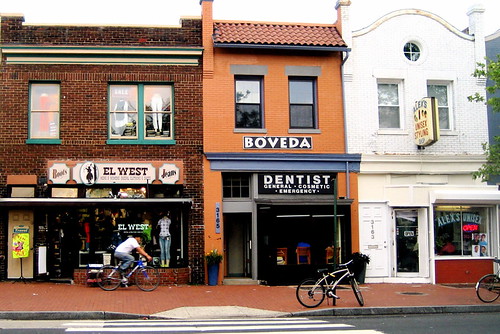Commercial Corridor Database Available for Public Interpretation
 |
| Image Credit: M.V. Jantzen, Flickr Mount Pleasant, DC Group Pool |
Mt. Pleasant's cheerful collection of bodegas, bars, and beauty salons along its main commercial thoroughfare cut a striking contrast to the national chains just two blocks east in Columbia Heights. Like the apartments and houses in the residential areas of Mt. Pleasant, the commercial corridor and the progression of businesses that have occupied its storefronts are part of a narrative of cultural change and population shift.
Historic Mount Pleasant (HMP), the local organization dedicated to preserving the architectural heritage of the neighborhood, recently received a grant from the Humanities Council of Washington, DC to create an in-depth study of the Mt. Pleasant commercial corridor. Working with records from the National Archives and Records Administration, the Washingtoniana Collection at the DC Public Library, the DC Recorder of Deeds, and the Historical Society of Washington, DC, HMP developed databases of historic building permits, and “chain of title” for historic commercial properties. The “chain of title” report lists past owners of many commercial properties from their construction to the present day.
 |
| 1919 Baist Map of the Commercial Corridor |
Even a brief glance at the raw data raises powerful questions about the history of the neighborhood, and about urban development in general. The largely quantitative study is available at Historic Mount Pleasant's website and the narrative is cataloged as part of the Humanities Council's DC Digital Museum. Examine the documents and let us know what questions, themes, patterns, and ideas seem to be begging for in-depth analysis. Leave a comment on the blog or write to Jasper Collier, Curator of the DC Digital Museum at, jcollier[at]wdchumanities[dot]org.


No comments:
Post a Comment